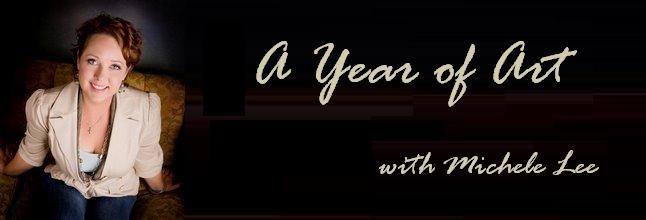
Today I will be meeting with some local artists and attending a Plein Air event. I am hoping to get SOMETHING painted and not get caught up in the atmosphere of the day. I will post when I get home.
Here is a little info for your Saturday:
En plein air
En plein air is a French expression which means "in the open air", and is particularly used to describe the act of painting outdoors.Artists have long painted outdoors, but in the mid-19th century working in natural light became particularly important to the Barbizon school and Impressionism. The popularity of painting en plein air increased in the 1870s with the introduction of paints in tubes (resembling modern toothpaste tubes). Previously, each painter made their own paints by grinding and mixing dry pigment powders with linseed oil. The Newlyn School in England is considered another major proponent of the technique in the latter 19th century.
It was during this period that the "Box Easel", typically known as the French Box Easel, was invented. It is uncertain who developed it first, but these highly portable easels, with telescopic legs and built-in paint box and palette, made treks into the forest and up the hillsides less onerous. Still made today, they remain a popular choice even for home use since they fold up to the size of a brief case and thus are easy to store.
French Impressionist painters such as Claude Monet, Camille Pissarro, and Pierre-Augusta Renoir advocated en plein air painting, and much of their work was done outdoors, in the diffuse light provided by a large white umbrella. In the second half of the nineteenth century and beginning of the twentieth century in Russia, painters such as Vasily Polenov, Isaac Levitan, Valentin Serov, Konstantin Korovin and I.E. Grabar were known for painting en plein air. American Impressionists, too, such as those of the Old Lyme school, were avid painters en plein air. American Impressionist painters noted for this style during this era included, Guy Rose, Robert William Wood, Mary Denil Morgan, John Gamble, and Arthur Hill Gilbert. The Canadian Group of Seven and Tom Thomson are examples of plein air advocates.
En plein air is a French expression which means "in the open air", and is particularly used to describe the act of painting outdoors.Artists have long painted outdoors, but in the mid-19th century working in natural light became particularly important to the Barbizon school and Impressionism. The popularity of painting en plein air increased in the 1870s with the introduction of paints in tubes (resembling modern toothpaste tubes). Previously, each painter made their own paints by grinding and mixing dry pigment powders with linseed oil. The Newlyn School in England is considered another major proponent of the technique in the latter 19th century.
It was during this period that the "Box Easel", typically known as the French Box Easel, was invented. It is uncertain who developed it first, but these highly portable easels, with telescopic legs and built-in paint box and palette, made treks into the forest and up the hillsides less onerous. Still made today, they remain a popular choice even for home use since they fold up to the size of a brief case and thus are easy to store.
French Impressionist painters such as Claude Monet, Camille Pissarro, and Pierre-Augusta Renoir advocated en plein air painting, and much of their work was done outdoors, in the diffuse light provided by a large white umbrella. In the second half of the nineteenth century and beginning of the twentieth century in Russia, painters such as Vasily Polenov, Isaac Levitan, Valentin Serov, Konstantin Korovin and I.E. Grabar were known for painting en plein air. American Impressionists, too, such as those of the Old Lyme school, were avid painters en plein air. American Impressionist painters noted for this style during this era included, Guy Rose, Robert William Wood, Mary Denil Morgan, John Gamble, and Arthur Hill Gilbert. The Canadian Group of Seven and Tom Thomson are examples of plein air advocates.
.jpg)
No comments:
Post a Comment